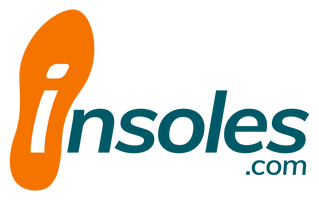Hallux Rigidus Symptoms and Relief
Feeling pain, stiffness, or limited mobility in your big toe?
It could be a Hallux Rigidus.
Hallux rigidus is a form of degenerative arthritis that specifically affects the first metatarsophalangeal joint, or the joint at the base of the big toe. This condition is characterized by pain, stiffness, and limited mobility in the big toe, often caused by bone spurs that develop around the joint.
Read on to learn more about what causes this condition, and how to treat it.
What is Hallux Rigidus?
Hallux rigidus is a type of arthritis in your big toe.
It specifically affects the joint at the base of the big toe where it meets the foot. Now, arthritis can mean many things and usually manifests itself in joint swelling and pain.
Factors contributing to hallux rigidus include:
- Overuse
- Injury
- Inflammation
- Genetic predisposition
Common symptoms include pain during activities, especially when pushing off while walking, stiffness in the toe, swelling around the joint, and the development of bunion-like bumps. As a progressive condition, it can worsen over time, leading to significant stiffness and pain that can impede everyday activities.
How Common is Hallux Rigidus?
It’s estimated that around 1 in 40 adults older than 50 have hallux rigidus making it one of the most common types of foot arthritis.
Symptoms of Hallux Rigidus
Diagnosis of hallux rigidus generally involves a physical examination and imaging tests, such as X-rays, to assess joint damage and exclude other conditions like gout or bunions. The symptoms can include:
- A sharp pain and stiffness in the big toe, particularly during activities that involve pushing off with the toe, such as walking or running.
- Decreased range of motion in the big toe making it difficult to bend the toe.
- Swelling and inflammation in the affected area.
- Bone spurs, or overgrowths on the top of the toe joint, which can further restrict movement and cause pain.
- Pain in cold or damp weather.
- In more advanced stages, the pain and stiffness can lead to a limp or an alteration in the way you walk.
- Chronic hallux rigidus can lead to changes in the shape of the foot, affecting overall foot mechanics and function.
How to Treat Hallux Rigidus
Treatment varies based on severity and can range from non-surgical options like shoe modifications, orthotics, physical therapy, and anti-inflammatory medications to surgical interventions in more severe cases.
These surgical options may include removing bone spurs, reshaping the bones, or fusing the joint to reduce pain.
- Footwear Modifications: Shoes with a wide toe box reduce pressure on the toe. Using shoes with stiff soles or rocker-bottom designs can also help by limiting the amount of bend in the toe during walking.
- Orthotics: Custom orthotic devices can provide support and reduce stress on the toe joint. Over-the-counter arch supports might also be beneficial.
- Medications: Nonsteroidal anti-inflammatory drugs (NSAIDs) like ibuprofen can help reduce pain and swelling.
- Physical Therapy: Exercises to maintain joint flexibility and strength can be useful. A physical therapist can provide appropriate exercises and guidance.
- Activity Modification: Limiting or modifying activities that exacerbate the condition, like reducing running or impact sports, can be helpful.
If non-surgical treatments don't provide sufficient relief, surgery might be considered. Surgical options include:
- Cheilectomy: Removal of bone spurs and a portion of the foot bone to improve range of motion.
- Osteotomy: Cutting and realigning bones to reduce pain and improve function.
- Arthrodesis (Joint Fusion): Fusing the bones of the joint completely to eliminate the pain but also restricting any movement in the joint.
- Arthroplasty (Joint Replacement): Replacing the affected joint with an artificial one to maintain some joint movement.
It's crucial to consult with a healthcare provider or a specialist, such as an orthopedic surgeon or a podiatrist, for a personalized treatment plan. They can recommend the most appropriate treatment options based on the severity of your condition and your individual needs and lifestyle. Early and proactive treatment can help manage symptoms effectively and maintain foot function.
How to Prevent Hallux Rigidus
Preventative measures and effective management, like wearing appropriate footwear, avoiding activities that strain the toe joint, and maintaining a healthy weight, are important to manage symptoms and slow the progression of the condition. Early intervention is key in preserving foot function and mitigating pain, as hallux rigidus can significantly affect mobility and quality of life if left untreated.
What to Look for in Insoles for Hallux Rigidus
When selecting insoles for Hallux Rigidus, certain features are important to consider to ensure they provide the right support and relief. Here's what to look for:
- Rigid or Semi-Rigid Support: The insoles should offer a rigid or semi-rigid construction. This helps limit the motion of the big toe joint, reducing pain during activities like walking.
- Arch Support: Good arch support is crucial. It helps distribute pressure more evenly across your foot, reducing the load on the affected toe joint.
- Metatarsal Pad: A metatarsal pad can help redistribute your weight away from the painful area and reduce stress on the big toe joint.
- Shock Absorption: Cushioning materials that absorb shock can help reduce the impact on the toe joint, especially when walking on hard surfaces.
- Deep Heel Cup: A deep heel cup in the insole can provide stability and better alignment, which may help to relieve stress on the big toe.
- Breathability and Hygiene: Materials that allow for air circulation can help keep your feet dry and prevent odors.
It's recommended to consult with a healthcare professional, such as a podiatrist, who can provide advice on the best type of insole for your specific case of Hallux Rigidus. They may also be able to recommend specific brands or types of insoles that would be most beneficial for your condition.

